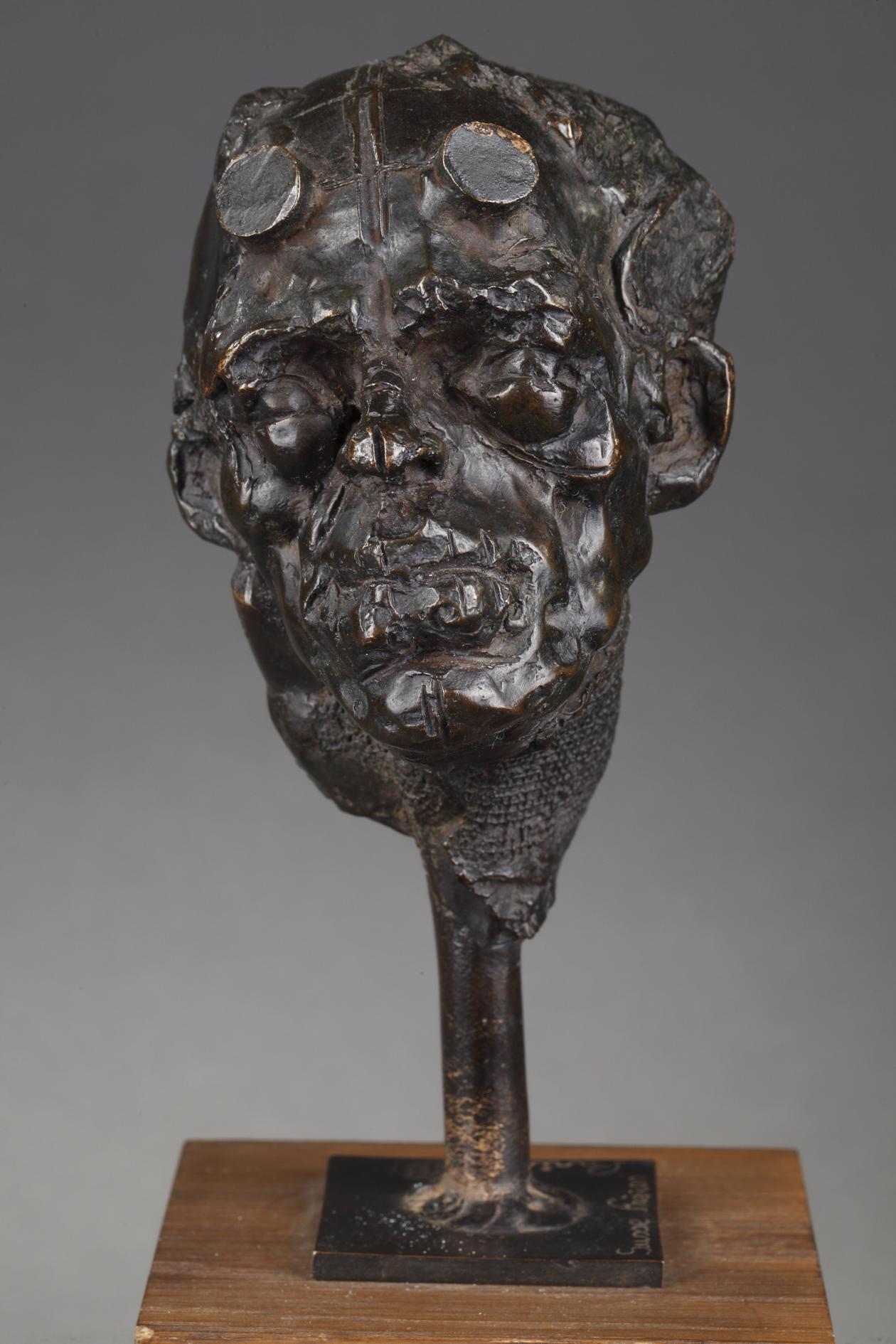Jean-Léon GérômeCésar franchissant le Rubicon
About the Item
- Creator:Jean-Léon Gérôme (1824 - 1904, French)
- Dimensions:Height: 14.97 in (38 cm)Width: 17.72 in (45 cm)Depth: 4.73 in (12 cm)
- Medium:
- Movement & Style:
- Period:
- Condition:
- Gallery Location:PARIS, FR
- Reference Number:
Jean-Léon Gérôme
One of the most prominent French Academic painters of the 19th century, Jean-Léon Gérôme is today credited with fashioning an entirely new artistic ideology. One of the originators of the Orientalist style, Gérôme was also a stalwart defender of Academic painting, which was waning under the rise of realism and Impressionism. Inspired by the year he spent in Rome with Paul Delaroche in 1834, he developed an insatiable appetite for traveling, and throughout his career, he traveled widely in Turkey, Egypt, and North Africa. His years exploring the Near East inspired his greatest Orientalist works, his Moorish and Turkish bath scenes.
A sculptor as well as a painter, Gérôme’s female figures have the same classical precision of Ingres but are executed with a more pronounced sensuality and realism. Enjoying great popularity and success during his lifetime, he was actively courted and patronized by private collectors and nobility. Today, the majority of Gérôme's works are held in major museums, with very few remaining in private hands.
Find authentic Jean-Léon Gérôme paintings on 1stDibs.
(Biography provided by M.S. Rau)

- ShippingRetrieving quote...Ships From: PARIS, France
- Return PolicyA return for this item may be initiated within 3 days of delivery.
- Man's head wearing glassesLocated in PARIS, FRMan's head wearing glasses by Laurent Belloni (né En 1969) Bronze cast with a nuanced black patina Signed "Belloni" on the base Foundry mark "Susse fondeur Paris", and foundry stam...Category
1990s French School Figurative Sculptures
MaterialsBronze
- Vertical Position N.1Located in PARIS, FR" Vertical Position N.1 " by Laurent Belloni (né En 1969) Bronze cast with a nuanced black patina Signed "Belloni" on the base Foundry mark "Susse fondeur Paris", and foundry stamp...Category
1990s French School Figurative Sculptures
MaterialsBronze
- CentaurLocated in PARIS, FR"Centaur" by Laurent Belloni (born 1969) Bronze cast with a nuanced dark brown patina Signed "Belloni" on the base Foundry mark "Susse fondeur Paris" numbered 1/1 France circa 1996...Category
1990s French School Figurative Sculptures
MaterialsBronze
- Roman driver on his chariotBy Emmanuel FremietLocated in PARIS, FREquestrian sculpture "Roman driver on his chariot" by Emmanuel Fremiet (1824-1910) Bronze with its original nuanced dark brown patina cast by MORE France circa 1880 height 41,5 cm l...Category
1880s French School Figurative Sculptures
MaterialsBronze
- Hay BinderBy Aimé-Jules DalouLocated in PARIS, FRThis Hay binder is a subject that is included in the famous suite commonly called "little workers" by Jules Dalou (1838-1902) Bronze with dark brown patina cast by Susse Frères - st...Category
Late 19th Century French School Figurative Sculptures
MaterialsBronze
- Hay BalerBy Aimé-Jules DalouLocated in PARIS, FRThis Hay baler is a subject that is included in the famous suite commonly called "little workers" by Jules Dalou (1838-1902) Bronze with dark brown patina c...Category
Late 19th Century French School Figurative Sculptures
MaterialsBronze
- VictoireLocated in LE HAVRE, FRJacques COQUILLAY (né en 1935) Victoire Original bronze Size : 105 x 22 x 20 cm Copy No. 1/8 Signature and numbered on the base. Original bronze m...Category
Early 2000s French School Nude Sculptures
MaterialsBronze
- Danse au TambourinBy Albert-Ernest Carrier-BelleuseLocated in Tallinn, EEAlbert-Ernest Carrier-Belleuse 1824 - 1887 Danse au Tambourin signed Carrier Belleuse bronze height: 72.4cm. diameter: 26.7cm. Provenance Important American collection. The present ...Category
Mid-19th Century French School Figurative Sculptures
MaterialsBronze
- Unknown womanLocated in Täby, SEInspired by the head of Apollo by Antoine Bourdelle. A woman with strong firm but still vulnerable expresson.Category
1980s French School Figurative Sculptures
MaterialsBronze
- Antique French Grand Tour Gilt Bronze Statue on Column Diana the Huntress 1838By Ferdinand BarbedienneLocated in Portland, ORA fine & large (34" tall) antique French gilt-bronze on marble column of Diana, cast by Ferdinand Barbedienne (1810-1892) after a statue by Jean Antoine Houdon (1741-1828), the bronz...Category
1830s French School Figurative Sculptures
MaterialsMarble, Bronze
- Female torsoLocated in Täby, SEGunnar Knut Nilsson, born 1904 in Karlskrona, died 1995 in Versailles in France, was a Swedish sculptor. Gunnar Nilsson studied watercolor painting and modeling at the Technical Vocational School in Karlskrona in 1918-19 and on his own in addition to working as a clerk at Finspångs Metallwerk. His debut exhibition was in Finspång in 1927. With the help of a local fundraiser, and after the encouragement of Carl Eldh, he traveled to Paris in 1928 to study sculpture for, among others, Charles Despiau and Paul Niclausse. In Paris he socialized with Bror Hjorth, whose former studio he also rented, Carl Frisendahl and Alberto Giacometti. He came to belong to "Le groupe des Neuf'' with Paul Cornet...Category
1950s French School Nude Sculptures
MaterialsBronze
- Bronze Art Déco Représentant Une Oie, Les Ailes DéployéesLocated in ROUEN, FRBronze Art Déco représentant une oie, les ailes déployées. Il est à fine patine brune. Socle en marbre vert. Signé de LUC. H.31 L.21.Category
1920s French School Figurative Sculptures
MaterialsBronze
